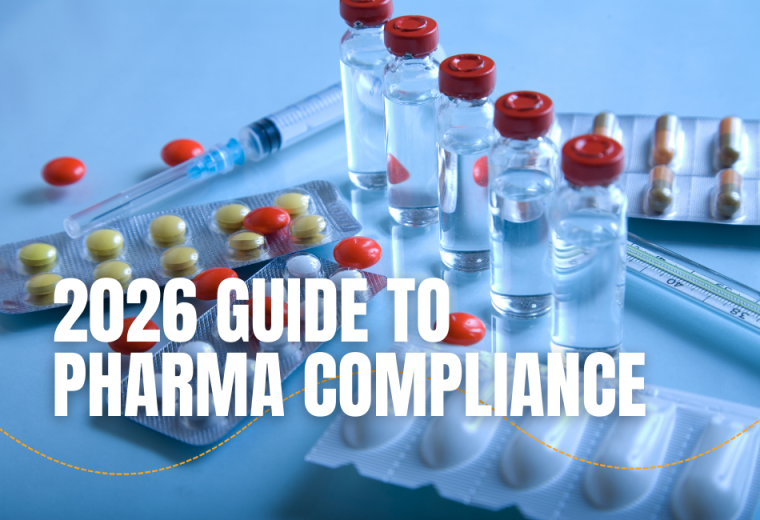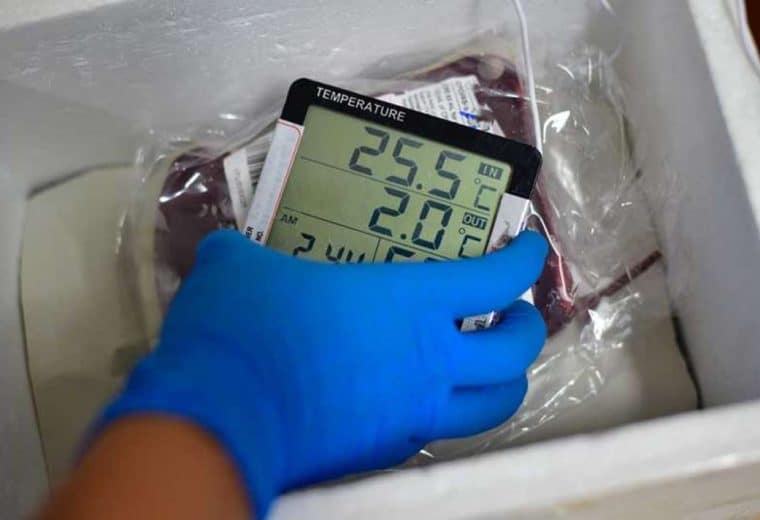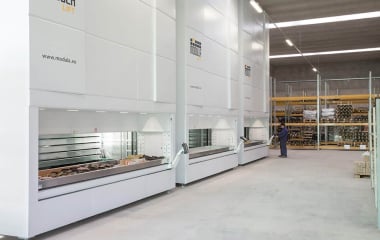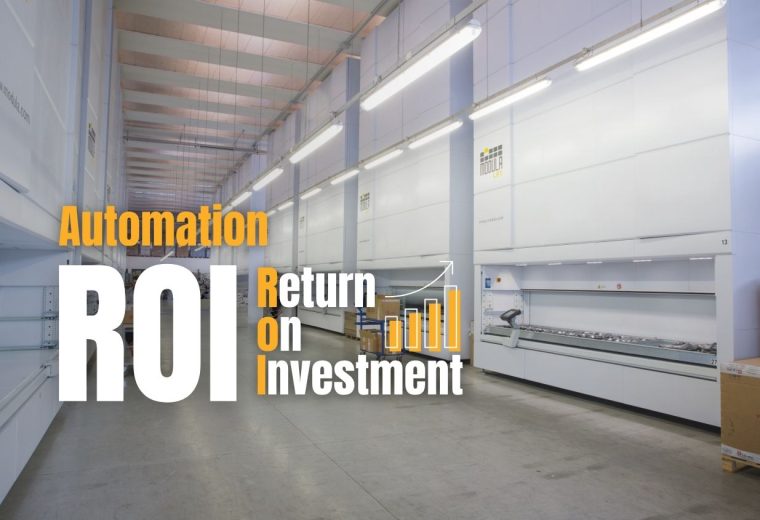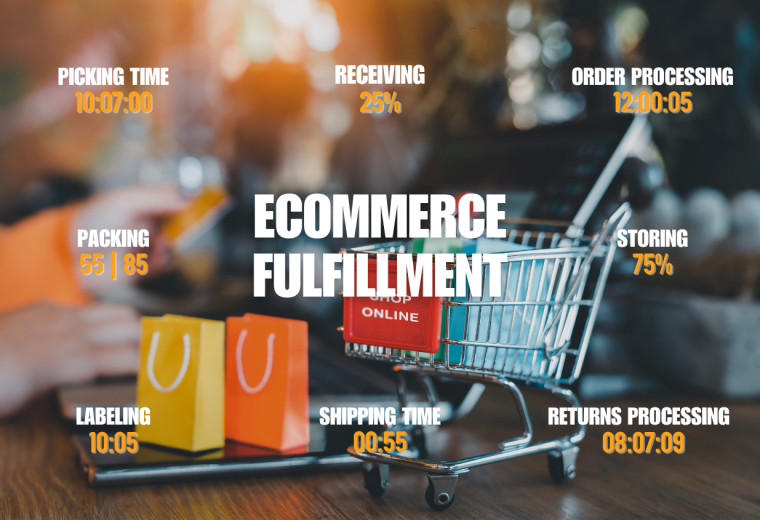IoT in Logistics: Components, Use Cases & Common Challenges
IoT in Logistics: Key Points
The Internet of Things (IoT) is reshaping logistics and warehouse management, enabling real-time visibility, predictive insights, and automation across operations.
Today, key components of IoT in logistics include:
- Analytics to turn raw data into actionable insights
- Sensors for tracking movement, condition, or location
- Connectivity to transmit data across systems
Top use cases range from fleet monitoring and predictive maintenance to inventory control and asset tracking. But adoption isn’t without challenges—scaling, data security, and reliability remain common concerns.
The market reflects this momentum; valued at $6.7 billion in 2023, it’s projected to reach $17.8 billion by 2030, growing at a 15% CAGR.
Companies investing in IoT today are positioning themselves for long-term gains—both in operational efficiency and competitive advantage.
In this guide, we will:
- Break down the core components of IoT in logistics
- Compare IoT in logistics vs. supply chain management
- Explore high-impact use cases and benefits
- Get to know Modula IoT in action
Key Components of IoT in Logistics
The Internet of Things (IoT) in logistics refers to the integration of internet-connected physical devices, such as sensors, vehicles, and equipment, into the transportation and supply chain ecosystem.
These devices communicate and share data with minimal human intervention, enabling real-time visibility and responsiveness across operations.
At its core, IoT enhances traditional logistics by enabling real-time connectivity, operational visibility, and synchronization across various components.
- Sensors: Acting as the sensory organs of IoT, sensors collect critical data from the logistics environment, including location, temperature, humidity, and speed, providing the foundation for informed decision-making.
- Connectivity: Reliable communication networks, such as cellular, Wi-Fi, or satellite connections, are vital for ensuring that data flows seamlessly across different points in the logistics chain, whether locally or on a global scale.
- Data analytics: The raw data gathered by IoT devices is processed using advanced analytics, including machine learning and predictive modeling. These tools convert data into actionable insights that help businesses streamline routes, reduce costs, and proactively maintain equipment.
IoT in Logistics vs. IoT in Supply Chain
Although the terms are often used interchangeably, IoT in logistics and IoT in supply chain management refer to two different levels of application.
IoT in logistics focuses on day-to-day operations, specifically the movement and handling of goods within warehouses, transportation networks, and distribution centers. It supports activities like fleet tracking, warehouse automation, and predictive maintenance.
IoT in supply chain management, on the other hand, takes a broader view. It connects data across the entire network—from sourcing and production to inventory planning and final delivery. The goal is to improve coordination, forecasting, and long-term decision-making.
This table breaks down the differences between IoT in logistics and across the supply chain, emphasizing key operational gains.
| Feature | IoT in Logistics | IoT in Supply Chain Management |
| Scope | Focuses on transportation and warehousing functions | Encompasses the entire supply chain, from procurement to final delivery |
| Use Cases | Fleet tracking, warehouse automation, and predictive maintenance | End-to-end visibility, inventory optimization, and demand forecasting |
| Main Technologies | GPS, RFID (for item tracking), temperature and environmental sensors | RFID, ERP system integration, IoT platforms, edge computing, and cutting-edge analytics |
| Goal | Immediate delivery and operational optimization | Strategic supply chain efficiency, responsiveness, and agility |
Top Use Cases of IoT in Logistics
The future of warehouse logistics is already taking shape, driven by IoT innovations that are actively reshaping how goods are transported, tracked, and managed.
Shipment Tracking and Condition Monitoring
Monitoring IoT devices like RFID tags, eSIMs, and GPS sensors give logistics providers end-to-end visibility into the movement and condition of shipments.
These tools don’t just show where a shipment is; they also capture environmental data such as temperature, humidity, and vibration, which is critical for transporting sensitive or perishable goods.
Fleet Management
IoT revolutionizes fleet management by delivering immediate insights into vehicle location, load capacity, engine performance, and driver behavior.
With connected sensors and telematics systems, logistics teams can dynamically adjust routes, minimize idle time, and improve delivery scheduling based on live traffic and weather data.
These technologies also play a key role in cost control, helping cut fuel consumption, extend vehicle lifespan through predictive maintenance, and identify unsafe driving behaviors that could lead to accidents or regulatory penalties.
Predictive Maintenance
IoT sensors track equipment conditions in real-time, monitoring temperature, vibration, and usage patterns to spot early signs of wear.
This data enables logistics teams to predict failures before they happen and schedule maintenance only when needed, reducing downtime, cutting repair costs, and extending asset lifespan.
Inventory Management
IoT solutions for warehouse management make inventory tracking faster and more accurate.
With RFID tags and smart shelves, companies can monitor stock levels and item locations instantly, decreasing manual checks and preventing stockouts or overstocking.
This constant stream of data improves forecasting, speeds up restocking, and helps maintain the right inventory levels to meet demand without tying up unnecessary capital.
Benefits of IoT in Logistics and Supply Chain Management
Integrating IoT technologies into logistics operations delivers significant benefits that help improve performance, reduce costs, and enhance customer satisfaction. Here are some of the most impactful advantages:
Greater Fleet Efficiency and Asset Utilization
IoT-enabled tracking systems give logistics providers on-the-fly visibility into vehicle location, condition, and performance, optimizing routes, reducing idle time, and improving delivery reliability.
This same visibility helps address costly “blind handoffs”, the weak links where goods transition between manufacturers, warehouses, and delivery partners.
According to McKinsey, these breakdowns can account for up to 19% of logistics costs in the United States, or approximately $95 billion annually. By closing these gaps, IoT enables a more synchronized, transparent, and cost-efficient supply chain.
Lower Operational Costs
IoT helps lower logistics costs by using data to optimize fuel use, flag maintenance needs early, and improve driver performance.
It also enables dynamic rerouting based on traffic or weather, reducing delays and fuel waste. Together, these efficiencies drive down operating expenses and boost productivity.
Elevated Customer Experience
IoT plays a key role in improving customer satisfaction by enabling on-the-fly delivery tracking, accurate ETAs, and proactive updates.
These features give customers greater visibility and confidence throughout the delivery process.
FedEx, for example, uses an IoT-based solution called SenseAware to track sensitive shipments instantly, monitoring factors like location, temperature, humidity, light exposure, and shock.
This level of detail helps ensure safe delivery and keeps customers informed every step of the way, building trust and reducing service issues.
Common Challenges of Implementing IoT and How To Address Them
Despite its advantages, implementing IoT in logistics comes with hurdles, such as:
Scalability
As IoT usage expands, the volume of data grows exponentially. Without the right infrastructure, managing and processing this information can become a major bottleneck.
How to address it: Invest in cloud-based or modular platforms that can scale with demand. Flexible systems allow you to add capacity as needed without major disruption.
System Integration
Integrating IoT tools into legacy logistics systems can create friction, especially if different platforms don’t communicate well.
How to address it:
Use a phased implementation strategy with thorough planning and testing. Ensure new tools are compatible with existing systems before rollout.
Security
Each connected device adds a potential entry point for cyberattacks. As IoT networks grow, so does the risk to sensitive operational data.
How to address it:
Implement end-to-end security protocols, conduct regular risk assessments, and monitor systems continuously to detect unauthorized access or anomalies.
Data Accuracy
IoT systems are only as valuable as the data they produce. Inaccurate, incomplete, or duplicated data can undermine decision-making.
How to address it:
Use real-time data validation, automated quality checks, and system alerts to maintain high data integrity and ensure insights are reliable.
IoT systems are only as valuable as the data they produce. Inaccurate, incomplete, or duplicated data can undermine decision-making.
Workforce Readiness
New tools often require new skills. Without adequate training, employees may struggle to adapt to IoT-enabled workflows.
How to address it:
Offer targeted training programs, hands-on demos, and continuous learning opportunities to help teams adopt new systems with confidence.
How To Implement IoT Solutions in Your Operations
Implementing IoT effectively starts with a clear strategy. Here are the key steps to guide your rollout.
Identify Your Business Objectives
Begin by identifying the specific problems you want to solve or the improvements you hope to achieve through IoT.
This might include reducing equipment downtime, improving inventory accuracy, or tracking deliveries in real time.
Evaluate Your Current Infrastructure
Assess your existing IT and operational technology infrastructure to determine if it can support IoT. Check network coverage, equipment compatibility, and whether assets can be retrofitted with sensors.
Select Practical and High-Impact Use Cases
Focus on use cases that are practical and offer a clear return on investment.
Examples include temperature monitoring, automated asset tracking, or predictive maintenance for warehouse machinery.
Choose the Right Sensors and Devices
Select sensors that match your operational environment.
Look for reliable, durable devices capable of communicating over your preferred network (e.g., Wi-Fi, LTE, or industrial protocols).
Choose or Develop an IoT Platform
Implement an IoT platform that can connect your devices, collect data, and provide instant feedback.
This platform should support analytics, alerts, and integration with your existing business systems like warehouse management systems (WMS) or enterprise resource planning (ERP).
Our Modula IoT platform enables live monitoring of automated storage systems, integrates seamlessly with Modula WMS, and delivers secure, cloud-based access to analytics, alerts, and performance data, empowering smarter, connected warehouse operations.
With Modula IoT, you get the following:
- Real-time monitoring: Track the status and performance of your Modula units anytime, anywhere.
- Predictive maintenance: Spot issues early with usage insights and automated alerts, preventing downtime before it happens.
- Secure remote access: View machine data via a cloud-based portal with built-in authentication for safe, convenient access.
- Direct support access: Get fast, personalized help using the “Call from Copilot” feature to connect with Modula Service.
- Performance optimization: Leverage operational data to drive continuous improvements.
- Dashboards and analytics: Visualize key metrics like energy use, mission history, and saturation levels, all in one centralized view.
Address Security and Data Privacy Requirements
Establish strong cybersecurity measures to protect your IoT environment. This includes encrypting data, securing device access, performing regular firmware updates, and complying with industry regulations.
Run a Pilot Test
Before rolling out IoT solutions across your entire operation, run a pilot program in a small, controlled environment.
Monitor performance, gather feedback, and evaluate whether the solution meets your expectations.
Train Your Team
Educate your employees on how to use the new IoT system, interpret the data, and respond to alerts. Ensure everyone involved understands the benefits and their role in maintaining the system.
Scale the Solution Across Your Organization
Once the pilot proves successful, expand the implementation to other areas of your operation. Continue refining the system based on data insights and operational feedback.
Need Help Getting Started?
If your warehouse operations could benefit from greater visibility, efficiency, and control, get in touch with our Modula specialists to see how IoT can deliver measurable impact.


